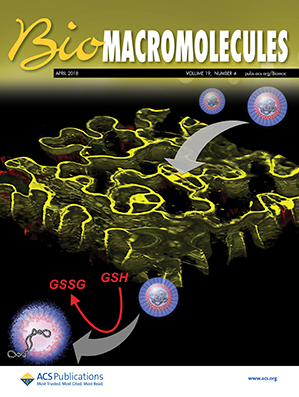Furcellaran: Impact of Concentration, Rheological Properties, and Structure on Ice Recrystallization Inhibition Activity
IF 5.4
2区 化学
Q1 BIOCHEMISTRY & MOLECULAR BIOLOGY
引用次数: 0
Abstract
Recrystallization is considered the main damaging mechanism during the frozen storage of biologic materials. In this study, furcellaran, a polysaccharide related to κ-carrageenan, was studied for its concentration-dependent effect on ice crystal growth and recrystallization. The structure and sulfate content of the utilized furcellaran was analyzed by 1H nuclear magnetic resonance spectroscopy, ion chromatography, and high-performance size-exclusion chromatography. Additionally, the rheological properties of furcellaran solutions were investigated. Our findings demonstrate that furcellaran inhibits ice growth as effectively as κ-carrageenan. Furthermore, the rheological properties change with increasing furcellaran concentration, resulting in a gel-like consistency at 5 g/L, which coincides with decreased recrystallization inhibition activity and larger crystals. This suggests that gel formation or a gel-like consistency has to be avoided for optimal recrystallization inhibition activity.
- Download: Download high-res image (200KB)
- Download: Download full-size image


呋喃西林浓度、流变特性和结构对冰再结晶抑制活性的影响
再结晶被认为是生物材料冷冻储存过程中的主要破坏机制。在这项研究中,研究了与 κ-carrageenan 相关的多糖 furcellaran 对冰晶生长和再结晶的影响。利用 1H 核磁共振光谱法、离子色谱法和高效尺寸排阻色谱法分析了所利用的呋喃卡拉兰的结构和硫酸盐含量。此外,还研究了呋喃卡拉溶液的流变特性。我们的研究结果表明,呋喃卡拉胶与κ-卡拉胶一样有效地抑制了冰的生长。此外,随着呋喃卡拉胶浓度的增加,其流变特性也会发生变化,当浓度达到 5 克/升时,会出现凝胶状稠度,同时再结晶抑制活性降低,晶体变大。这表明,要获得最佳的再结晶抑制活性,就必须避免凝胶的形成或凝胶状稠度。
本文章由计算机程序翻译,如有差异,请以英文原文为准。
求助全文
约1分钟内获得全文
求助全文
来源期刊

Biomacromolecules
化学-高分子科学
CiteScore
10.60
自引率
4.80%
发文量
417
审稿时长
1.6 months
期刊介绍:
Biomacromolecules is a leading forum for the dissemination of cutting-edge research at the interface of polymer science and biology. Submissions to Biomacromolecules should contain strong elements of innovation in terms of macromolecular design, synthesis and characterization, or in the application of polymer materials to biology and medicine.
Topics covered by Biomacromolecules include, but are not exclusively limited to: sustainable polymers, polymers based on natural and renewable resources, degradable polymers, polymer conjugates, polymeric drugs, polymers in biocatalysis, biomacromolecular assembly, biomimetic polymers, polymer-biomineral hybrids, biomimetic-polymer processing, polymer recycling, bioactive polymer surfaces, original polymer design for biomedical applications such as immunotherapy, drug delivery, gene delivery, antimicrobial applications, diagnostic imaging and biosensing, polymers in tissue engineering and regenerative medicine, polymeric scaffolds and hydrogels for cell culture and delivery.
 求助内容:
求助内容: 应助结果提醒方式:
应助结果提醒方式:


